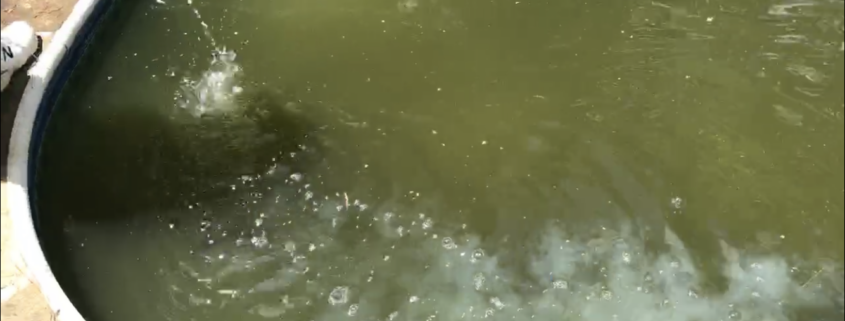
GREEN POOL CLEANING PROCEDURE
Green pools happen when algae take over a body of water. This is caused by eutrophication; a condition where micronutrients allow the growth and reproductive rate of algae to exceed the killing rate of chlorine. Flipping a pool from green to clean requires physically removing debris, killing algae with chlorine, then removing nutrients to slow its future growth rate.
Based on 10,000 gallons
Day 1
- Clean out as much debris as possible with a net and vacuum
- Brush the green pool thoroughly
- Lower the pH of the water to 7.2
- Raise chlorine up to 10-15 ppm using non-stabilized chlorine
- Purge with CPR phosphate remover (32 fl.oz./ 10,000 gallons) around the perimeter of the pool
- Allow circulation for ten minutes
- Shut off circulation
Day 2
- Thoroughly vacuum the pool (to waste) and skim off any leaves or debris
- Test the free chlorine level
- Turn on the circulation system and begin filtering
- Purge with AAD Enzyme (32 fl.oz./10,000 gallons) around the perimeter of the pool
- Adjust the pH/alkalinity to be in LSI range
Follow Up
- Perform necessary vacuuming and brushing
- Backwash system as needed
- Clean filter
- Make any necessary chemical adjustments
Weekly and Monthly Maintenance
- Use AAD Enzymes (for normal and heavy bather loads) or CCE Clarifier (for light bather loads)
- Use CPR Phosphate Remover as needed to keep phosphate levels below 500 ppb, to help prevent future eutrophication.
Why this procedure works, where others struggle
The traditional way of handling a green pool is to shock it heavily with chlorine and algaecide until it turns green. The issue with this strategy is that it fails to get rid of the root cause of the problem: eutrophication. Eutrophication is caused by an over-abundance of micronutrients for algae. Primary among them is nitrogen (nitrates and ammonia) and phosphorus (phosphates). Chlorine is, in fact, the best algaecide. Adding additional algaecides is, at best, redundant. Unfortunately, algaecides of all kinds leave behind long-term byproducts. Sodium bromide leaves behind bromates, a known carcinogen. Ammonia-based algaecides leave behind nitrogen compounds that are actually food for future algae and are a large source of chlorine demand (see combined chlorine). So the traditional “kill it hard, and kill it again until it stops coming back” method is inefficient (and often, insufficient).
Our method works because chlorine kills the algae once, which releases phosphates into the water. CPR removes them from water, so they are taken out of the equation. To be clear, CPR is not an algaecide or algaestat. It simply removes an inert nutrient–phosphates–from water. In doing so, we can reduce eutrophication, and this procedure is highly effective at flipping a green pool to a clean pool.
